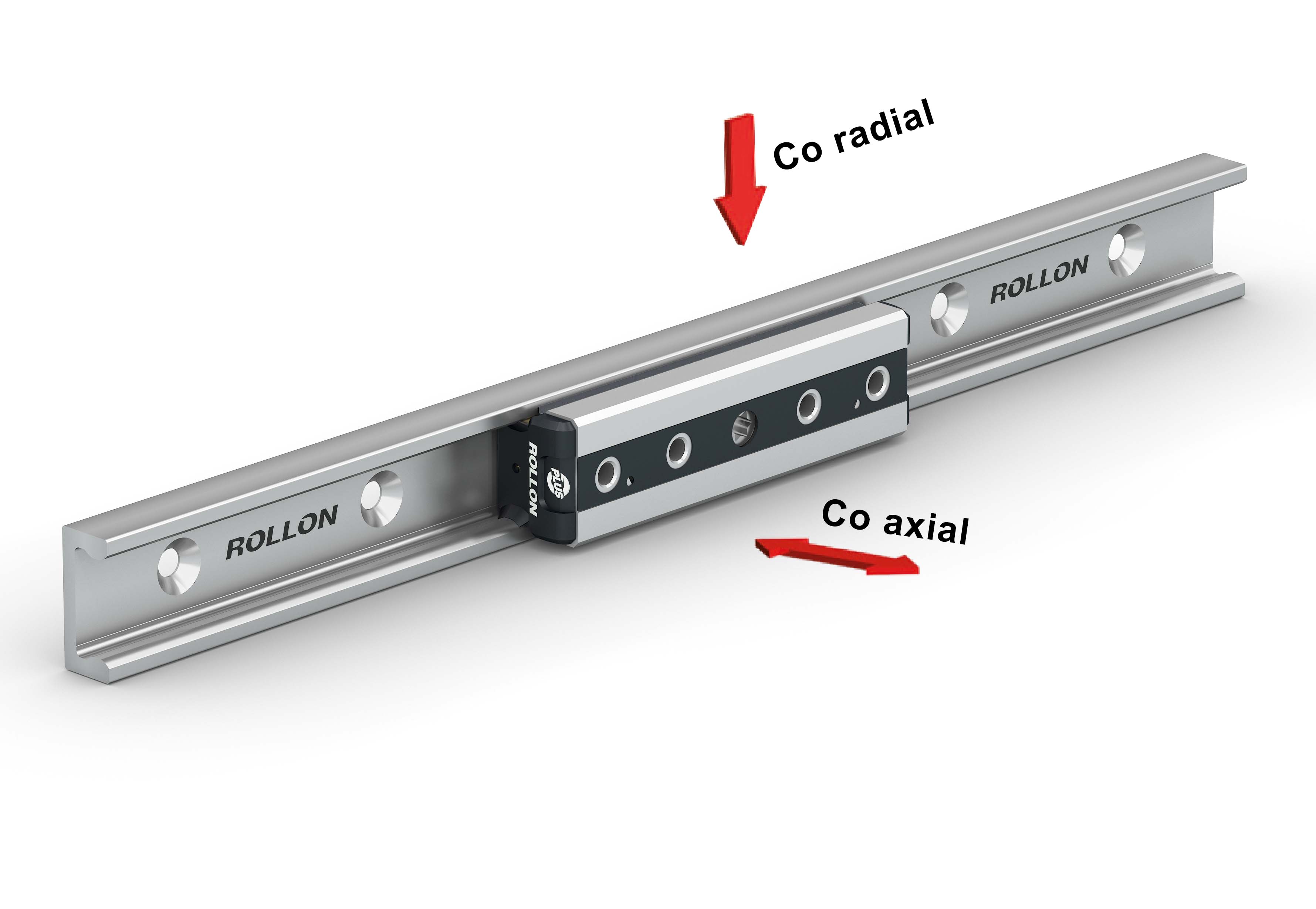One of the more difficult aspects of evaluating and specifying linear motion products is figuring out the difference between axial and radial load ratings. Because axial load ratings are typically much lower than radial load ratings, it’s important to understand the characteristics of both types of loads so you can compare the ratings with confidence.
Axial and Radial Loads: The Basics
- Axial loads. As the name suggests, an axial load is literally a load that goes into an axle. In fact, an axle on a car demonstrates axial load forces well: When a car drives around a corner, the wheels must be able to handle the sideways load. For a roller-type bearing like our Compact Rail, the rollers spin around a center axle. That means the load is going into the axial, or mounting, surface.
- Radial loads. To understand radial loads, consider a circle and its radius. The radial force in a roller moves directly from the outside of the roller toward the center, so the radial load moves away from the axis. Radial loading is always higher than axial loading because the internal bearings have the full support of the raceway, whereas the axial load only has a partial engagement.
Non-Roller Style Bearings
Axial and linear loads are pretty easy to visualize with roller style bearings since it’s easy to see the roller’s rotation. However, telescopic rails or bearings with recirculating balls are less straightforward. Telescopic Rails’ individual balls roll along the surface of the rail. Even though the ball is round, the same rules apply: Each ball will have a theoretical axle or axis that the ball circles around. The axial load will be straight into the axis, and the radius comes from the axis. Note that with the telescopic rail, the load ratings are typically given for a pair of rails. Telescopic rails are not made for handling twist, so a pair is required.
For recirculating ball style bearings such as our Mono Rail Plus, there are multiple surfaces and rows of ball bearings. Be sure to reference the catalog illustrations when you specify your bearing. Our Mono Rail Plus’ running grooves are ground in a semicircular profile and have a 45-degree contact angle in 0 arrangement. This unique surface feature ensures the same load capacity in both the radial and axial directions.
Accurate Load Calculations Help You Select an Optimal System
At Rollon, we have a full lineup of linear bearings with a wide choice of sizes, styles and load-handling capabilities. Knowing the differences between axial and radial load ratings will help you make accurate load calculations so you’ll get an optimal system that satisfies your needs. If you have questions about axial and radial loading, your local Rollon sales representative or regional engineer can answer them and assist you with sizing your application.


